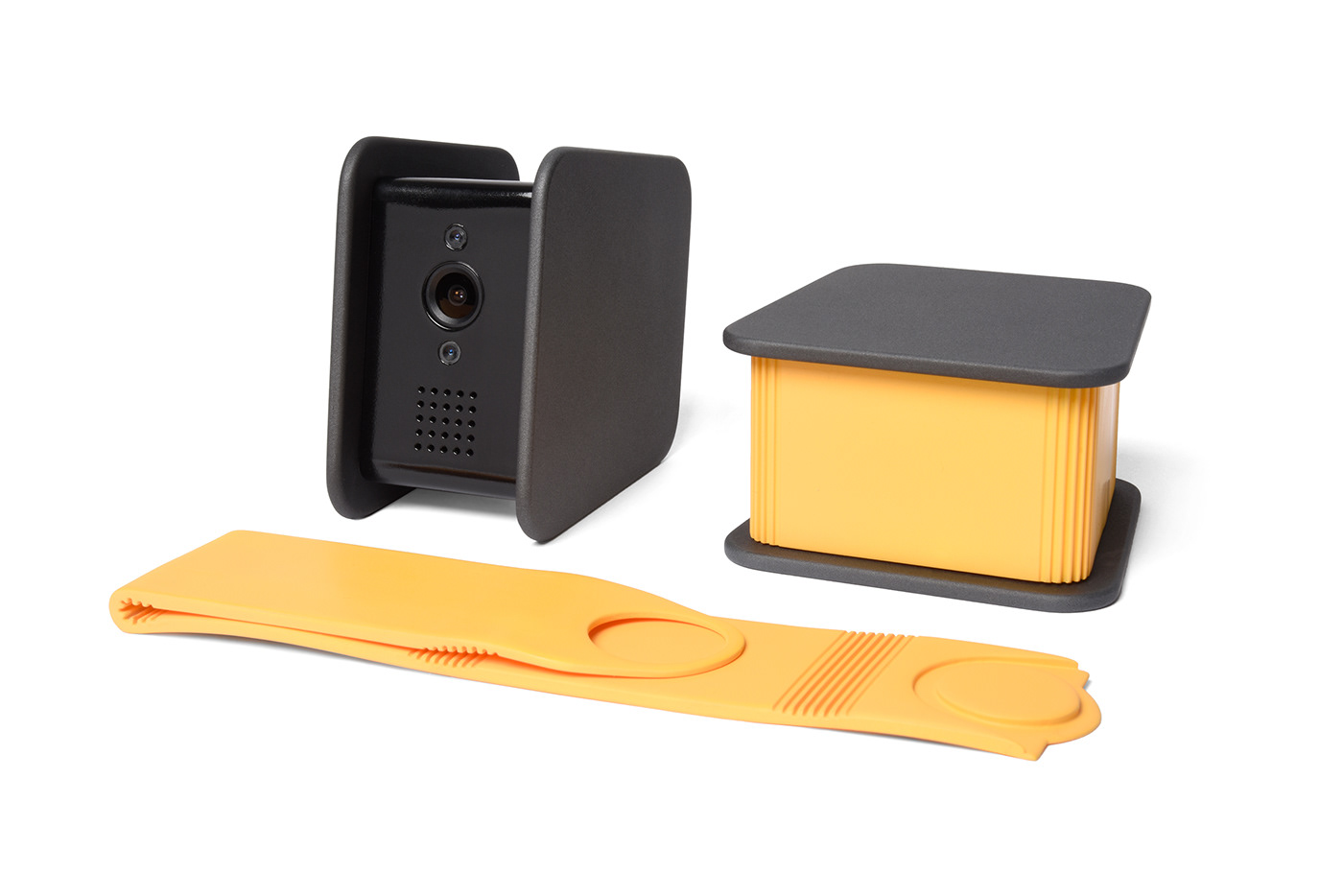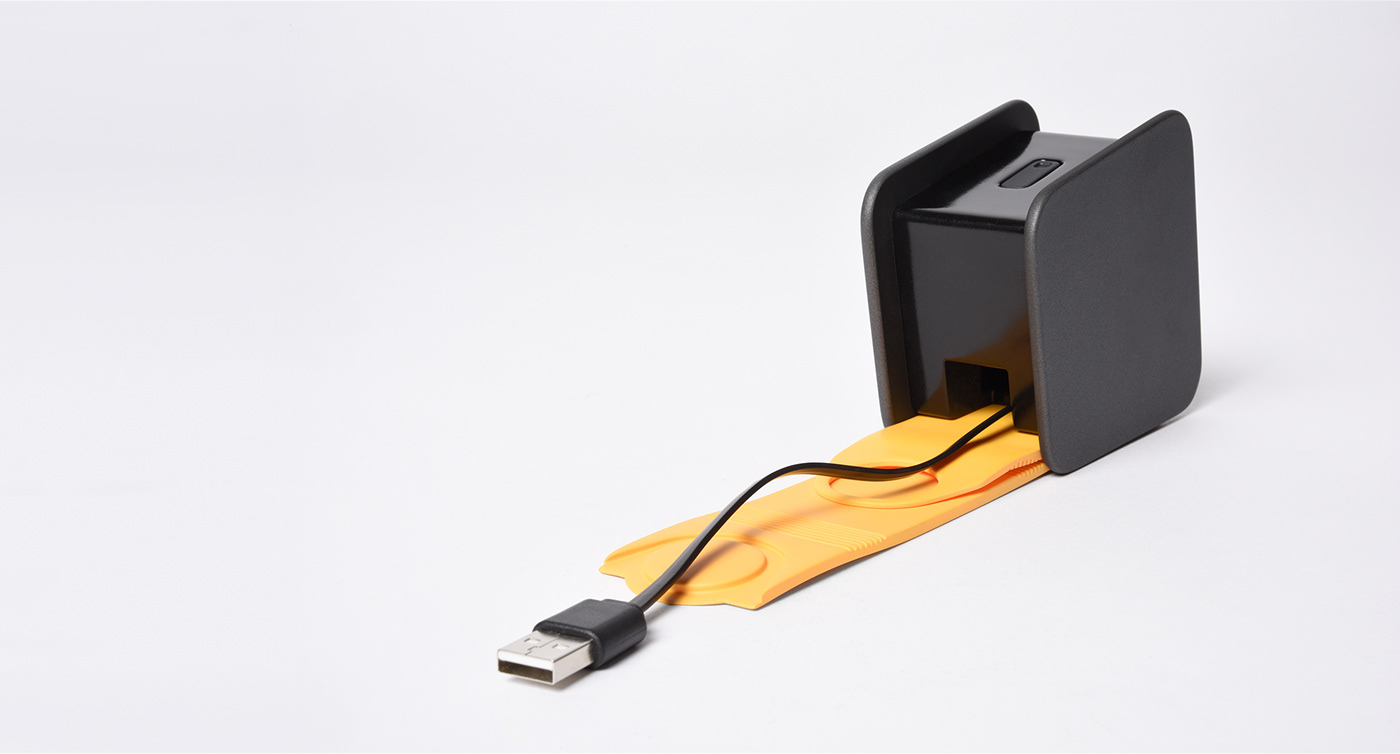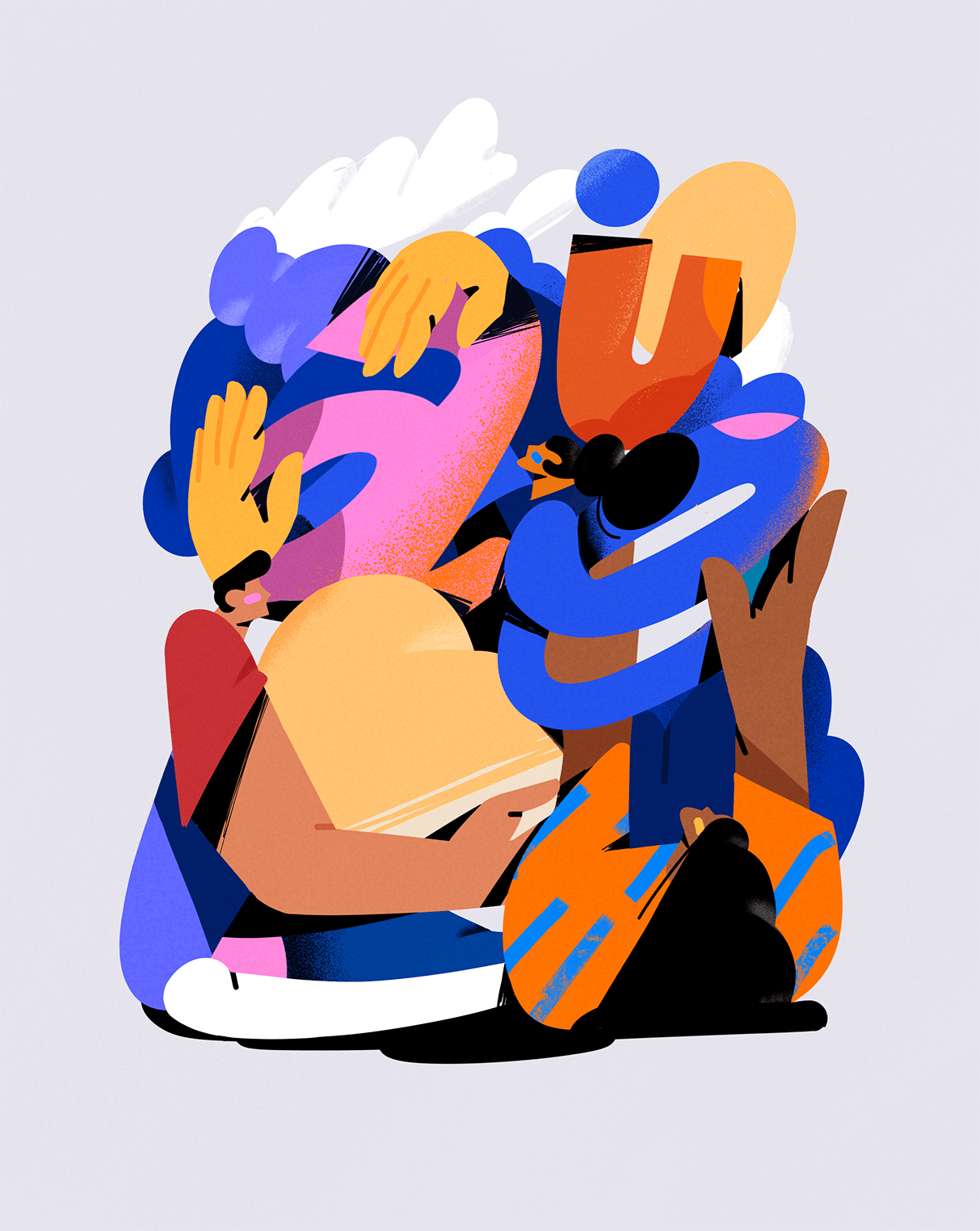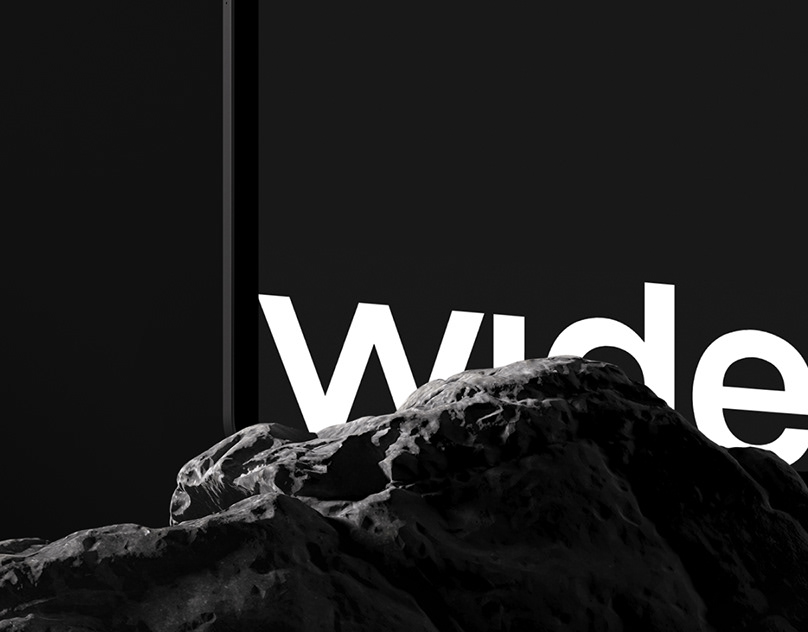
Our world is dominated by constant technological progress. In an increasingly digital world, life without displays is nearly unimaginable today. Many people spend almost the entire day in a near vision mode which causes an increase in myopia and other eye afflictions worldwide. The daily use of computer screens is blamed for this. This project deals with the issue and has the goal to counterbalance it through eye exercises during daily routines. Shift is a smart projector which can dynamically project all kinds of text onto surfaces in the user’s surroundings. By focusing on different distances, the user adapts and thus avoids a constant gaze at the screen.
What problem has been dealt with?
We live in a world which is dominated by constant technological progress. Everything in our environment is steadily becoming more and more digital. However, the advantages of the increasingly digital transformation process are countered by certain disadvantages. This includes, in particular, spending too much time in front of displays. Whether using a computer, a smartphone or simply watching television – most information are consumed with our eyes through digital screens. Many people spend almost the entire day in a near vision mode which causes a worldwide increase in myopia and other eye afflictions. Screen work means hard work for our eyes. By concentrating our gaze on the screen, we almost continuously forego focusing on different distances, which means we avoid accommodation. As the consequence of limiting our field of view to the area of sharpest vision, we additionally ignore visual information in our peripheral vision.

What was the challenge?
Up to 90% of all information about our environment is perceived with our eyes which clearly shows how dependent we are on the health of our vision. There are many methods and tools that are used to prevent the negative impacts on human eyes. Vision training is systematically designed to improve the entire visual system and avoid common eye afflictions during the usage of digital screens. However, this requires the user to pause their daily activities for eye exercises. This is why I challenged myself with the question: Could there be a less interruptive way to integrate these types of exercises into the daily routine?
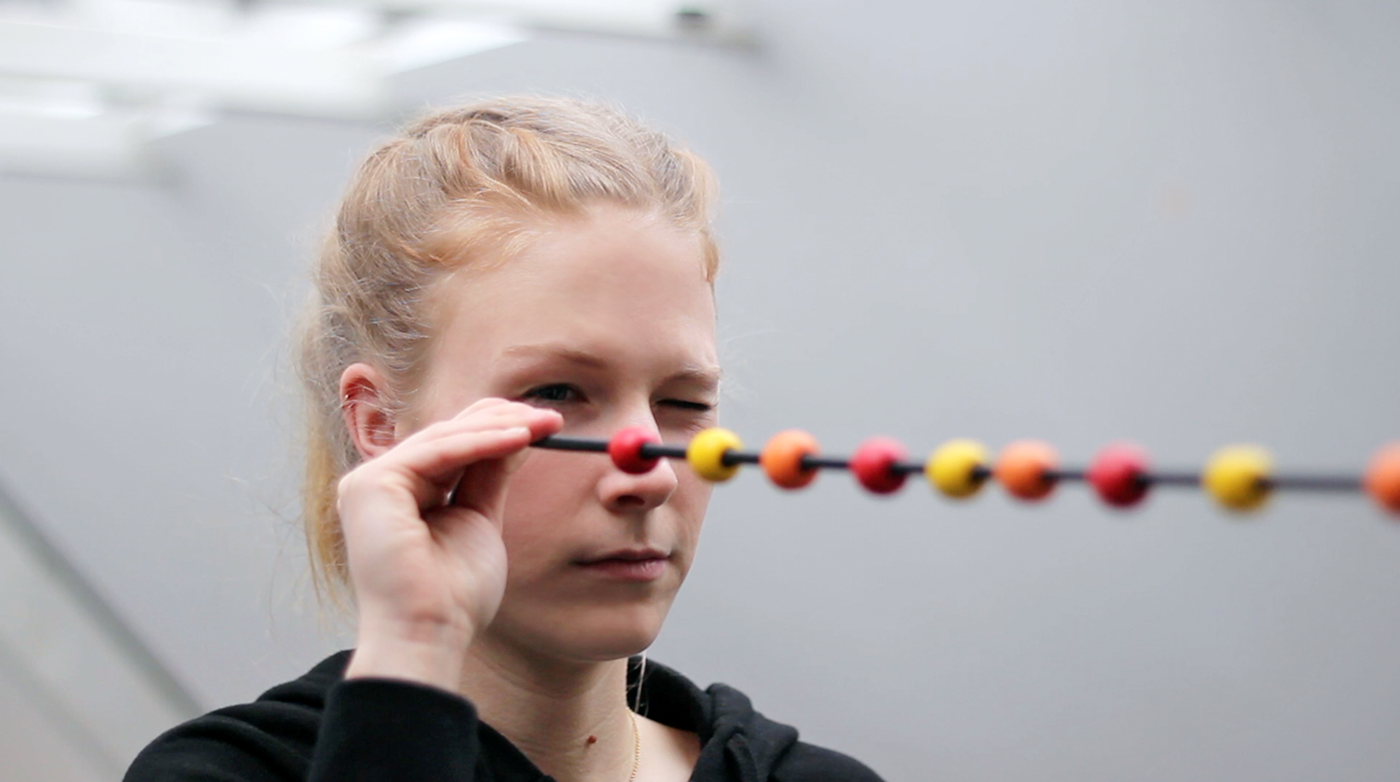
What was the process of conception?
The first approach was to consider how to reduce the main causes of eye strain while working with screens. I was initially convinced that an analog toolset for doing eye exercises offers an appropriate solution for this. Research and consultations with ophthalmologists enabled the limitation to three emphasis: accommodation, peripheral vision and eye movement. Introducing the analog training set as the first result of my project:
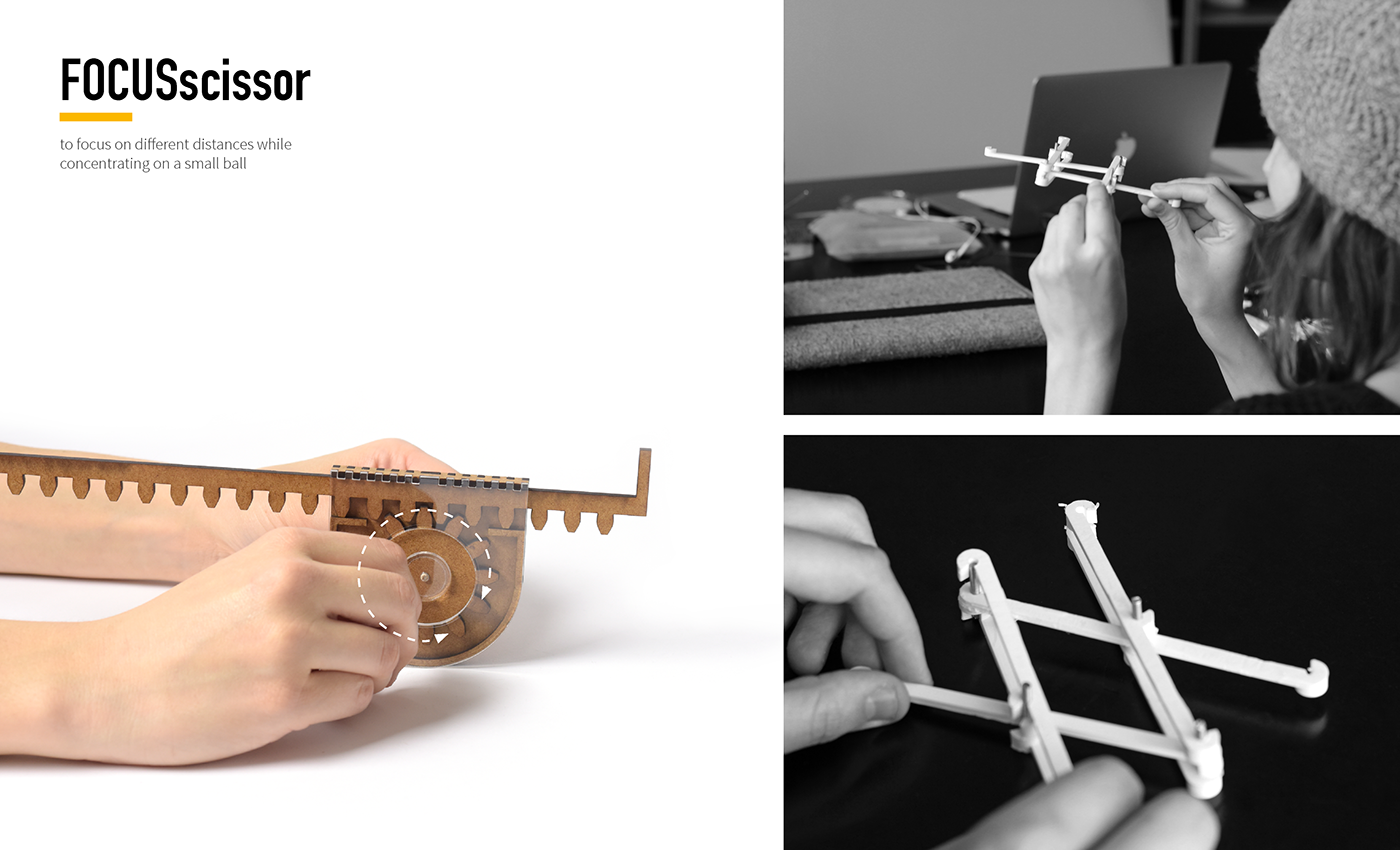
(1) accommodation – FOCUSscissor
Accommodation allows images at different distances to be focused on the retina. A string with regularly positioned pearls is the most frequently used tool for practicing this. The exercise consists of tightening the string in front of the nose to focus one pearl after the other. Unfortunately the possibility of fastening the other end of the tool at the right height is complicated and cannot always be guaranteed. This is why I came up with the idea of FocusScissor. Due to it’s construction, this tool offers a more comfortable alternative to practise accommodation. The combination of the handle and scissor-mechanism ensures swift and easy usage while focussing a small ball mounted on the top.

(2) peripheral vision – COLOURquiz
The training tool ColourQuiz consist of two identically mirrored hard devices. The tools intent is making conscious use of information in the user’s peripheral field of vision which is mostly neglected during screen work. Due to the integrated RGB LED strips, ColourQuiz alternately lights in different colors. The user is encouraged to identify the color. Speech recognition allows comfortable and effective training.
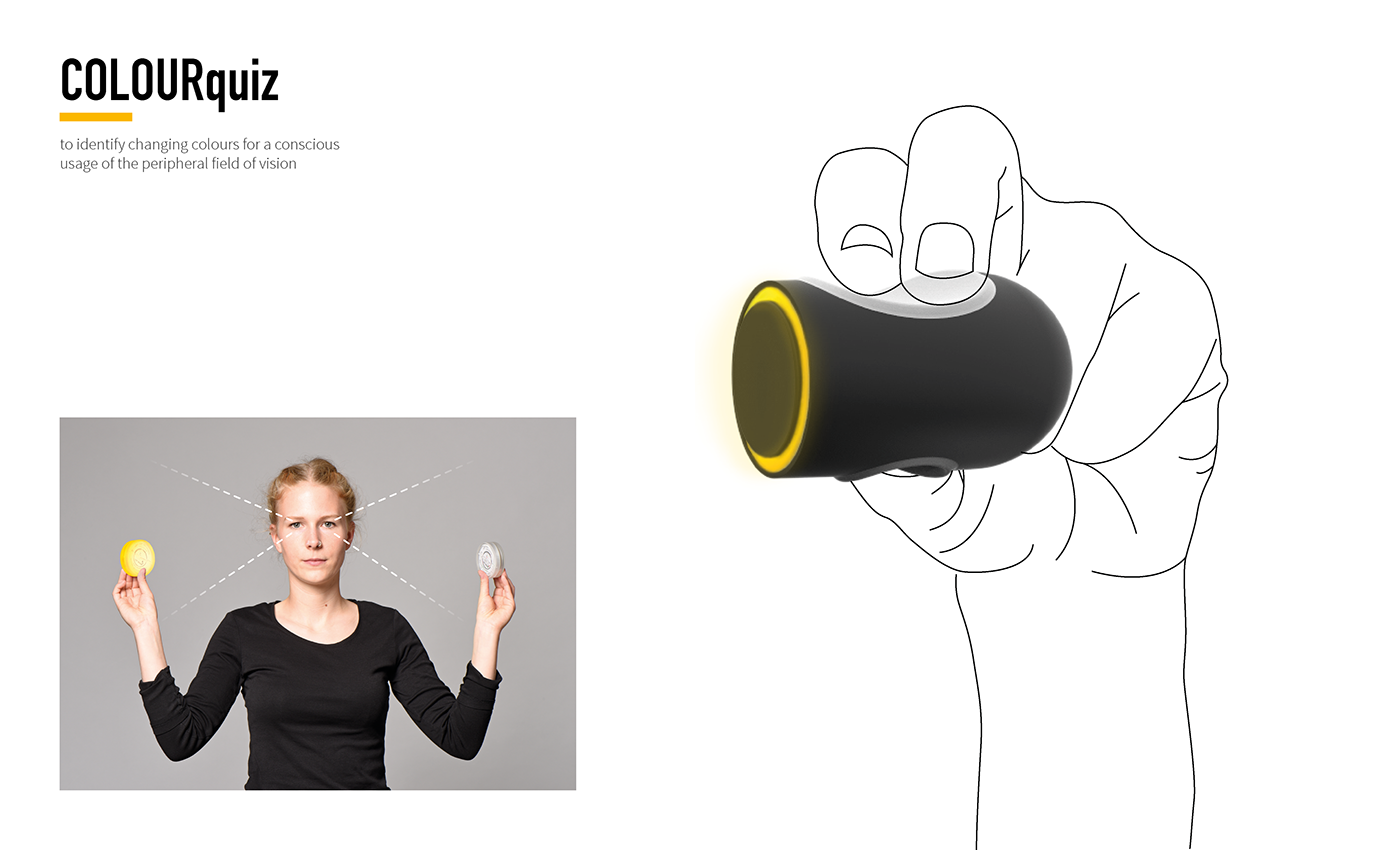
(3) eye movement – LEDspecs
This approach is based on the idea of encouraging the user to eye movement. It consists of a spectacle frame with an integrated LED chain. The series connection between the diodes creates a lightpath within the frame which the user’s eyes follow.
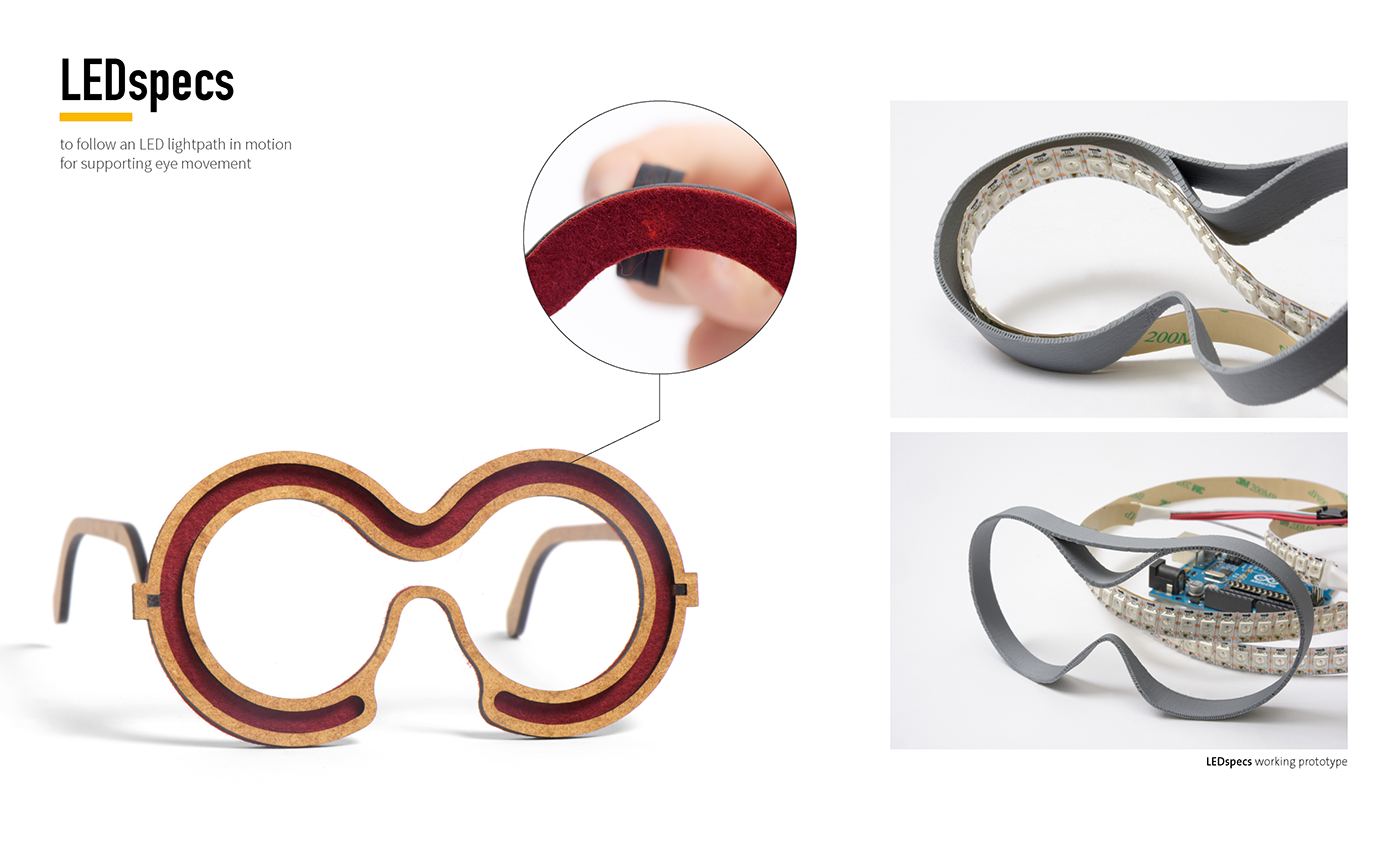
While analyzing use cases, it raised the question, how likely would users be to make use of these analog training tools? Implementing them consistently into their everyday life would require a certain degree of discipline and the awareness of the need to take breaks regularly. However, this means the three tools couldn’t guarantee a seamless integration of eye exercises into the daily routine - users would still need to pause their daily activities for vision training.
As the challenge hasn’t been solved yet completely following this approach, I needed to step back to the stage of ideation. Digital experiments and further interviews with ophthalmologists finally led to essential knowledge: Watching size scaling and position changing animations, encourages the user to accommodate. The reason this can be done is thus the animation simulates different distances and keeps the eye lenses in motion. It quickly became clear to me that the technology of laser projection provides the best requirements for my approach. These projectors can be very small while remaining in focus at any projection distance - even in daylight. Additionally, the greatest benefit of using laser projection as a new starting point, is the possibility to combine all three main emphasises of the exercises into one training tool. Test series of text projections on several surfaces answers confirmed this idea. The conceptual basis for shift was now established.
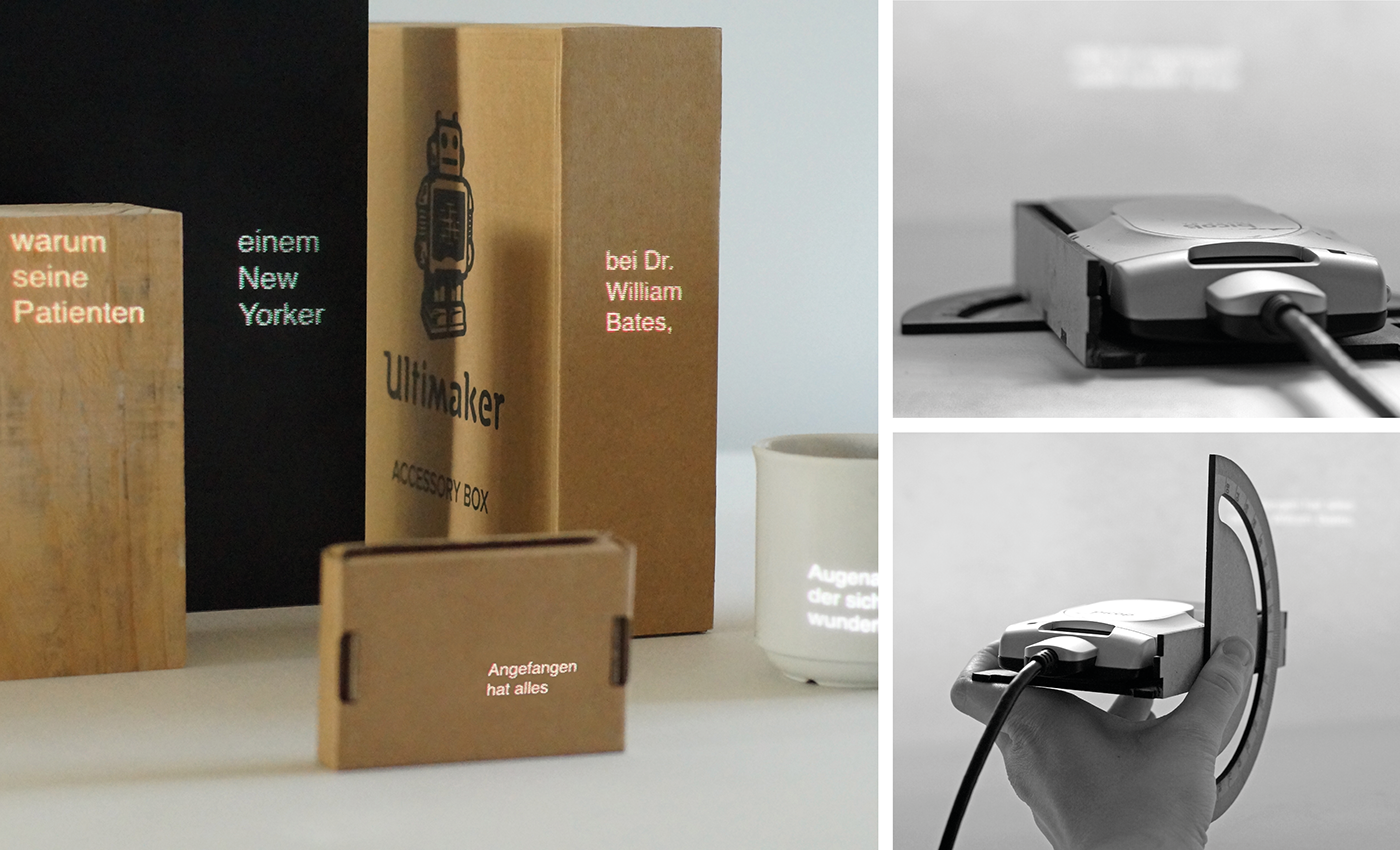
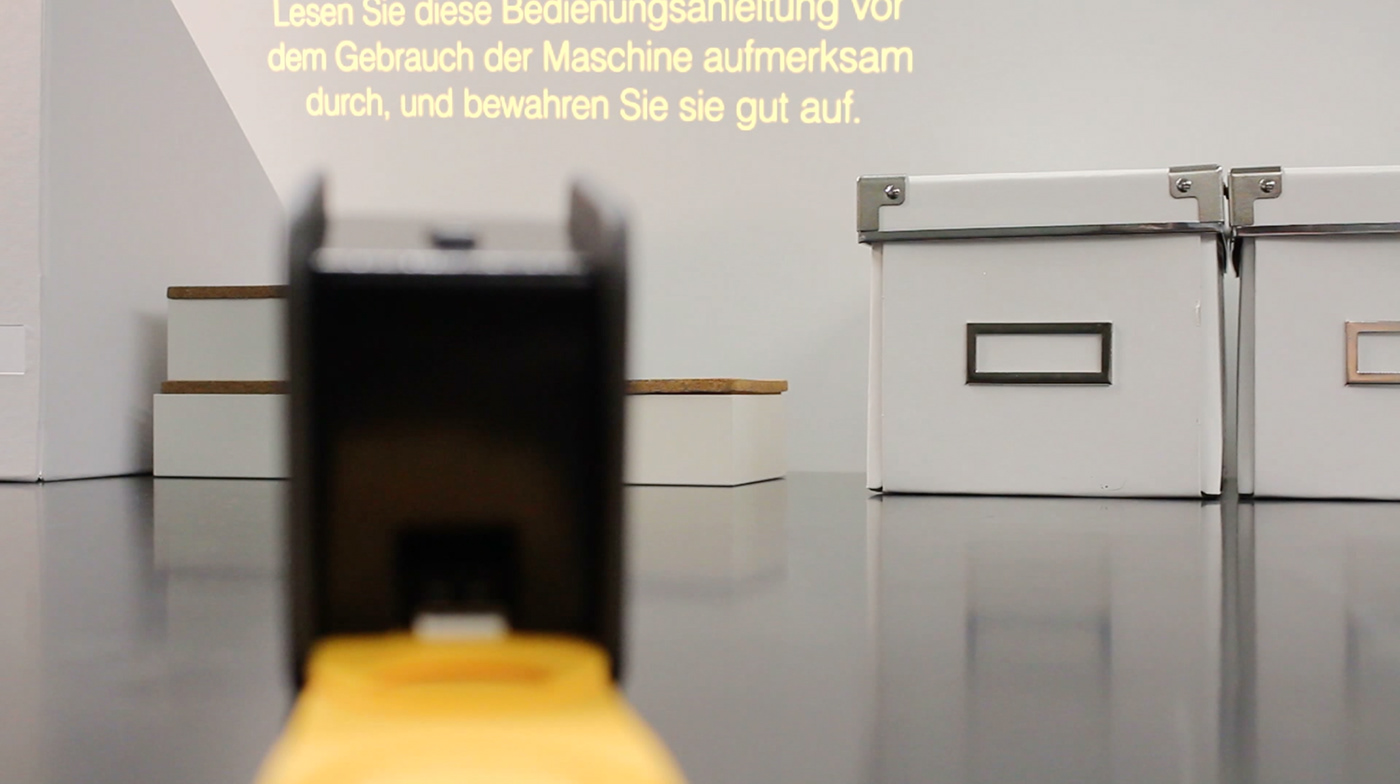
How does shift work exactly?
Shift is a smart projector which can dynamically transfer all kinds of text onto surfaces in the user’s surroundings. By focusing on different distances, the user adapts and thus avoids a constant gaze at the screen.
To start shifting, the user first needs to send his chosen text data to the related software named shiftApp, installed on any smart device. Depending on the location of this digital information, it can be transferred either offline via Bluetooth or online. Direct file sharing allows quick and easy transmission between shiftApp and, for example, an online magazine. When this process is finished, the text will be formatted by changing paragraph and character formats into software-based standards. Received image data is simultaneously sorted and deleted. Subsequently, the digital text data will be processed further for the projection. After turning on the smart projector, shift immediately starts scanning it’s environment to receive the depth data. Therefore, due to the IR-light source, an invisible fixed dot pattern will be projected onto the user’s surroundings. Then, the infrared camera of shift captures this information to proceed. To avoid projection on living beings and light sources, shift also has a thermographic camera. Thereby, the captured image will be transferred to shiftApp as well. According to this digital data, the software then identifies suitable projection surfaces and starts splitting the text into meaningful segments. The position and size of the projected text will be calculated by the distance between the user and the projection surface, as well as the legible field of view, which means an average range of 120 degrees. By displaying those results in an image which includes the highlighted projection surfaces, the user then has 10 seconds to edit this automatic selection through shiftApp. Subsequently, shift starts projecting: the digital text information located on the limited two-dimensional surface of the screen is shifted into the frontal field of vision of the user.
During usage, the projection can be manually controlled through shiftApp. Since this communication is controlled through a screen, the user interface is consciously limited to one main screen. By operating intuitively without watching the screen, it is not essential to interrupt the training. The text that has been projected is highlighted in real time. This information will be displayed continuously on the main screen during use. By simply scrolling down, the projection will repeat. By tap and double tap, the projection can be stopped or continued, as usual. Additionally, there are two horizontal slide controls adjustable in the opposite direction to the flow of the text. Depending on the usage, speed and display duration of the projection, this can be adjusted proportionally by moving the upper slider. By changing the level of difficulty through the lower slider, the position and text size can be manually adjusted for an added challenge.
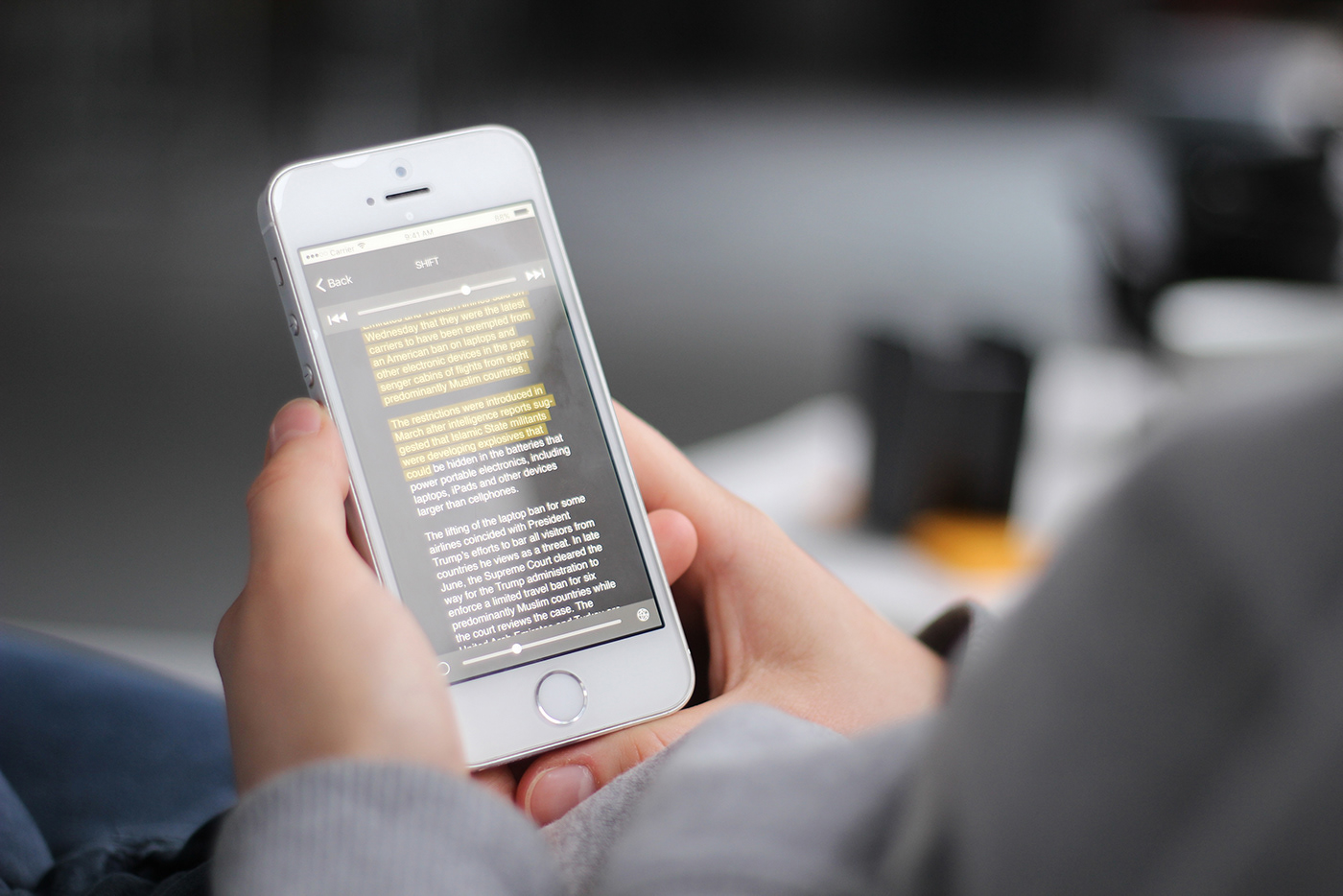
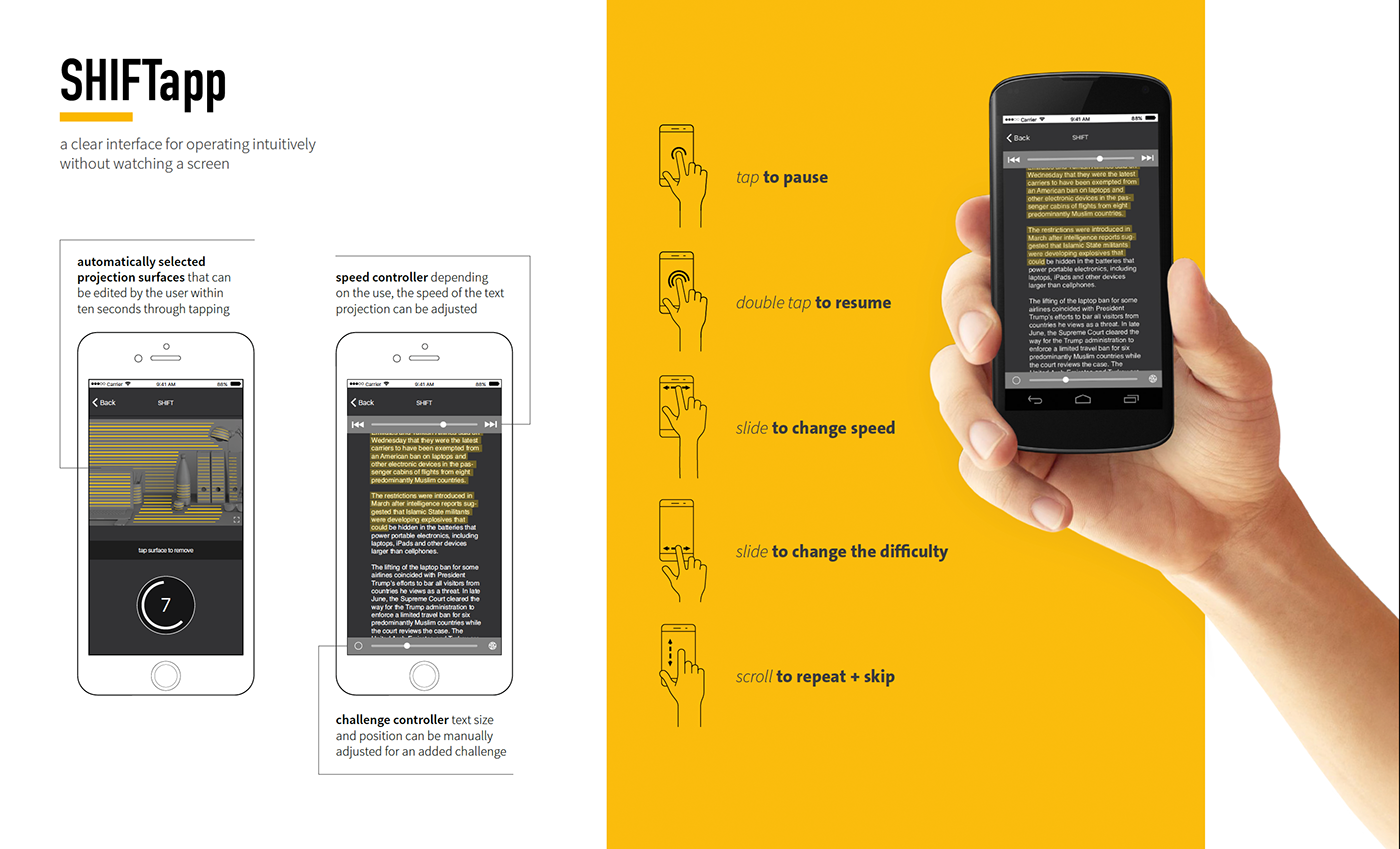
Why does SHIFT look like it looks like?
Shift was designed to be your daily companion. The smart projector should motivate his user to take it with him as often as possible. For that reason, it was important to me to reflect this mobile flexibility in the final design. The result is a combination of a hardware device and a silicone loop, which provides swift and easy protection for the lenses during transportation. To be ready for usage at any time, shift includes an extendable charging cable as well. It is not uncommon that users misplace components of products. To prevent this from happening, the silicone casing stays connected with shift during use, but can be easily removed for cleaning. That's possible due to an plastic elements acting like a barb on the bottom of the housing.

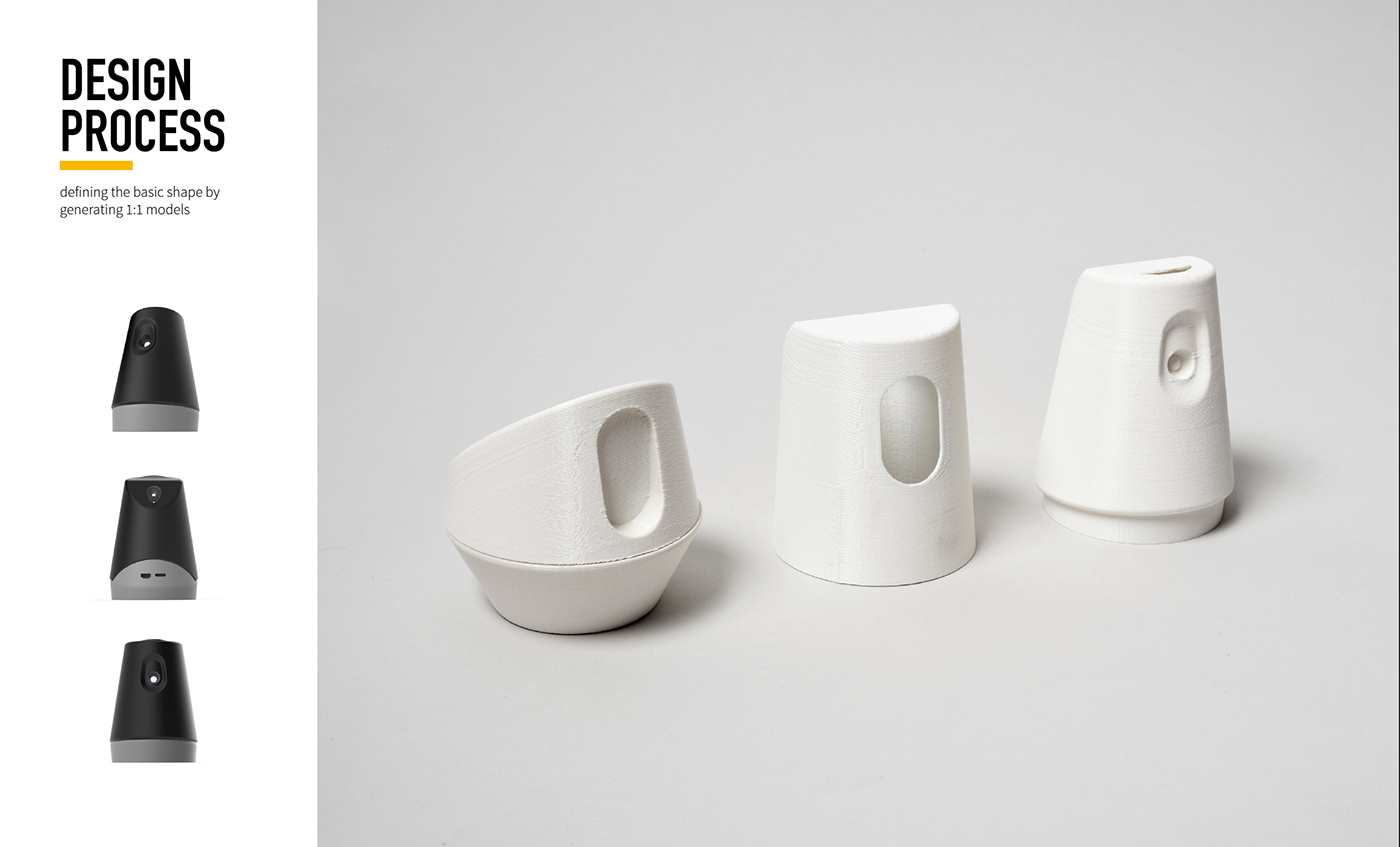
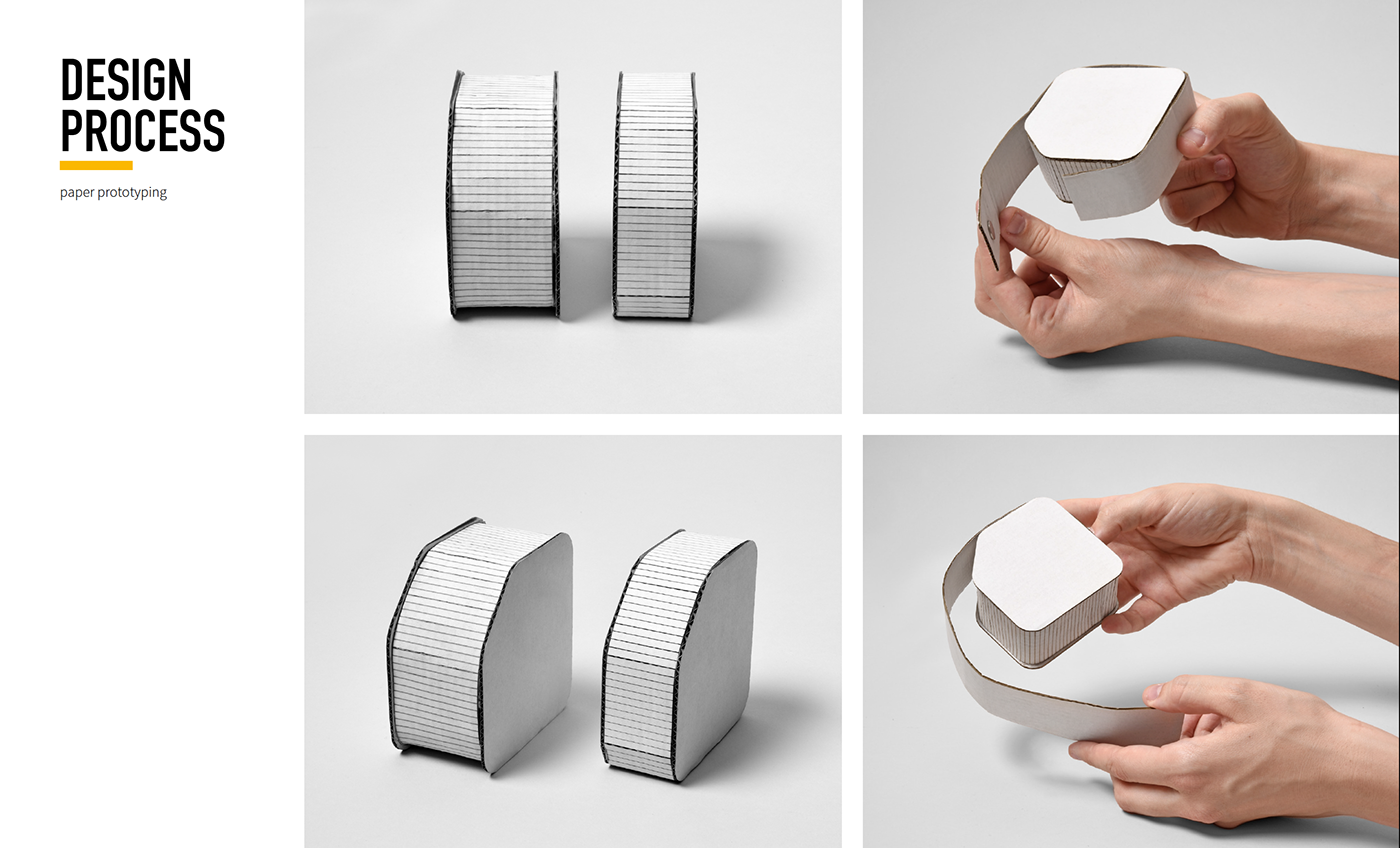
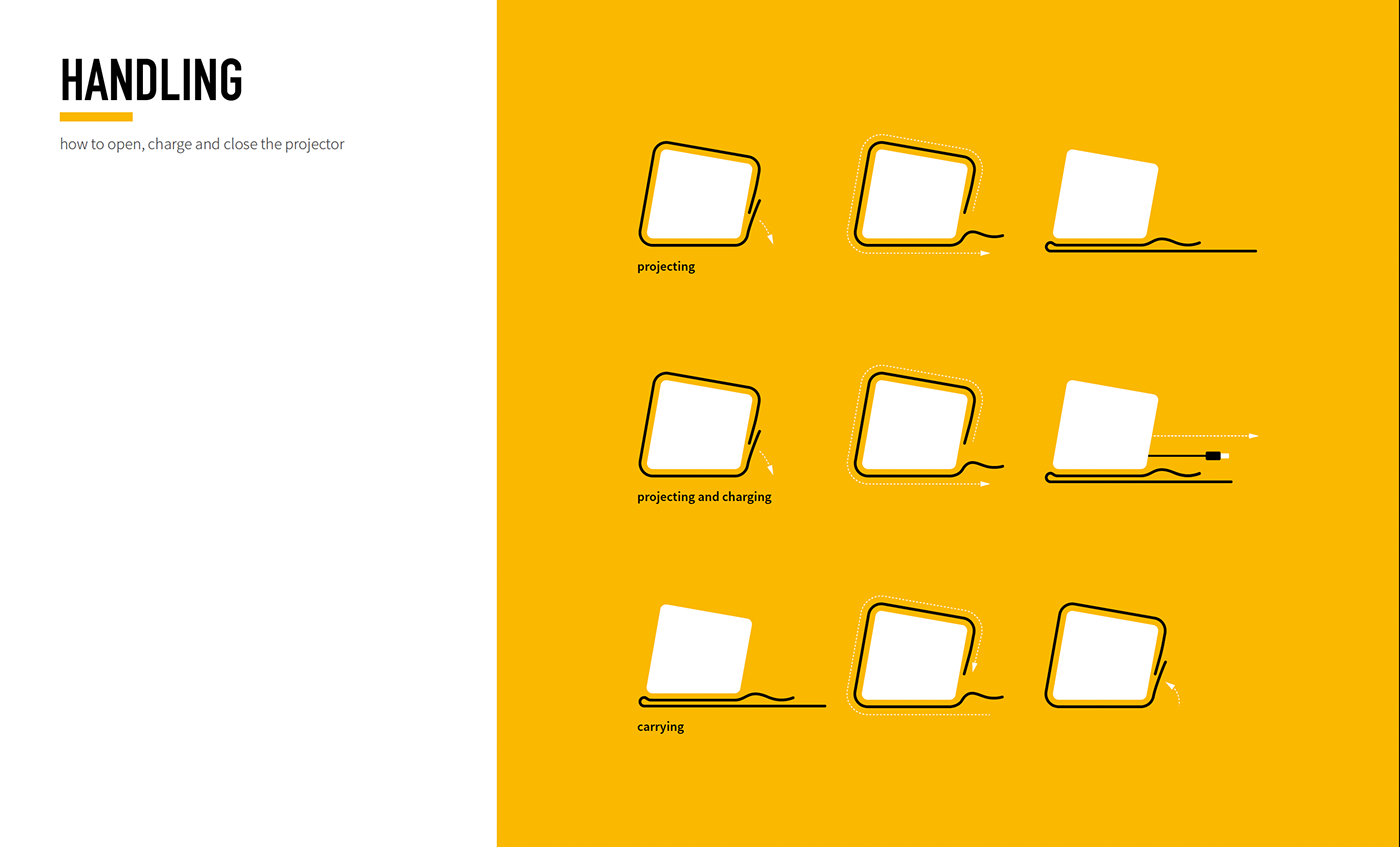
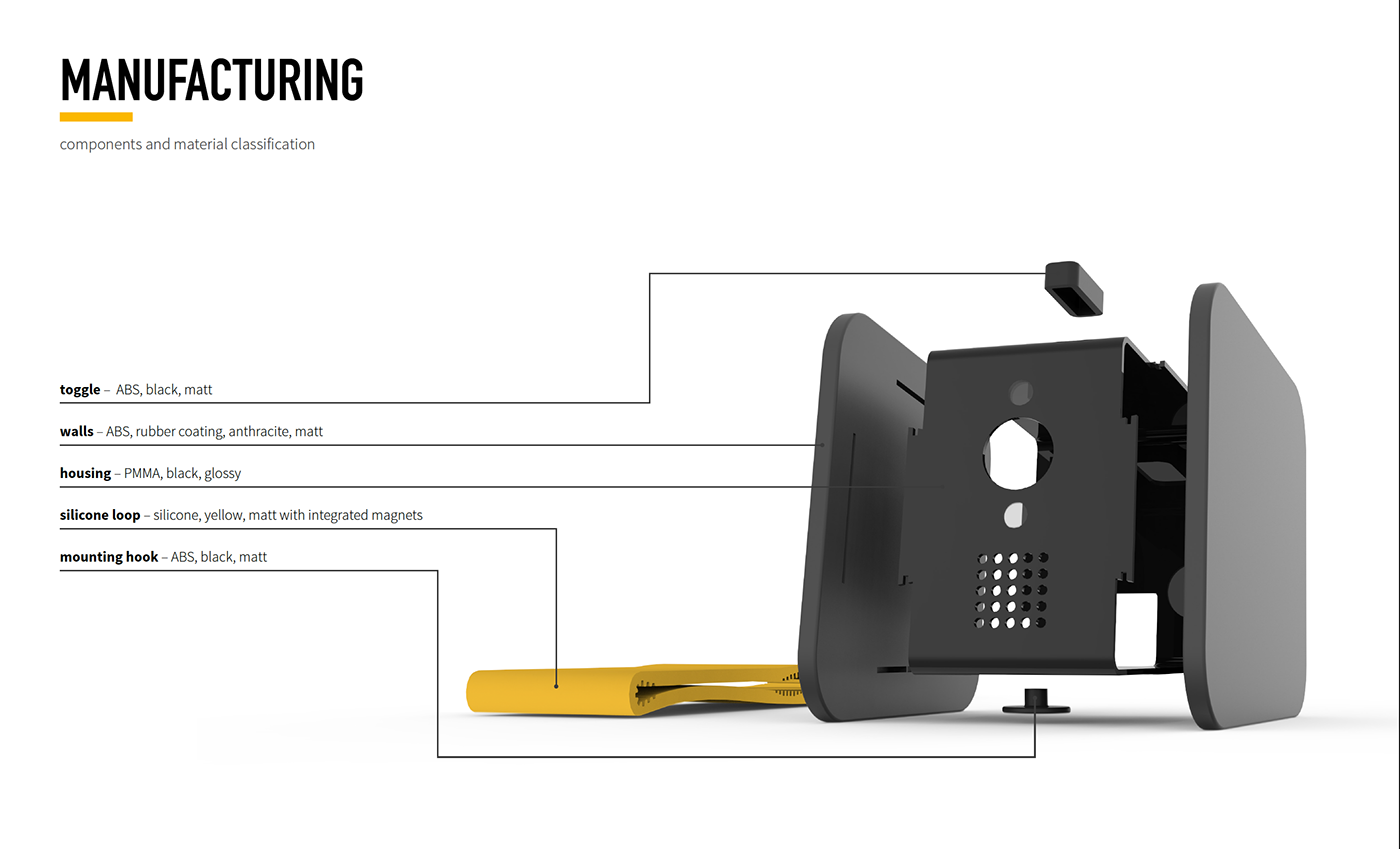
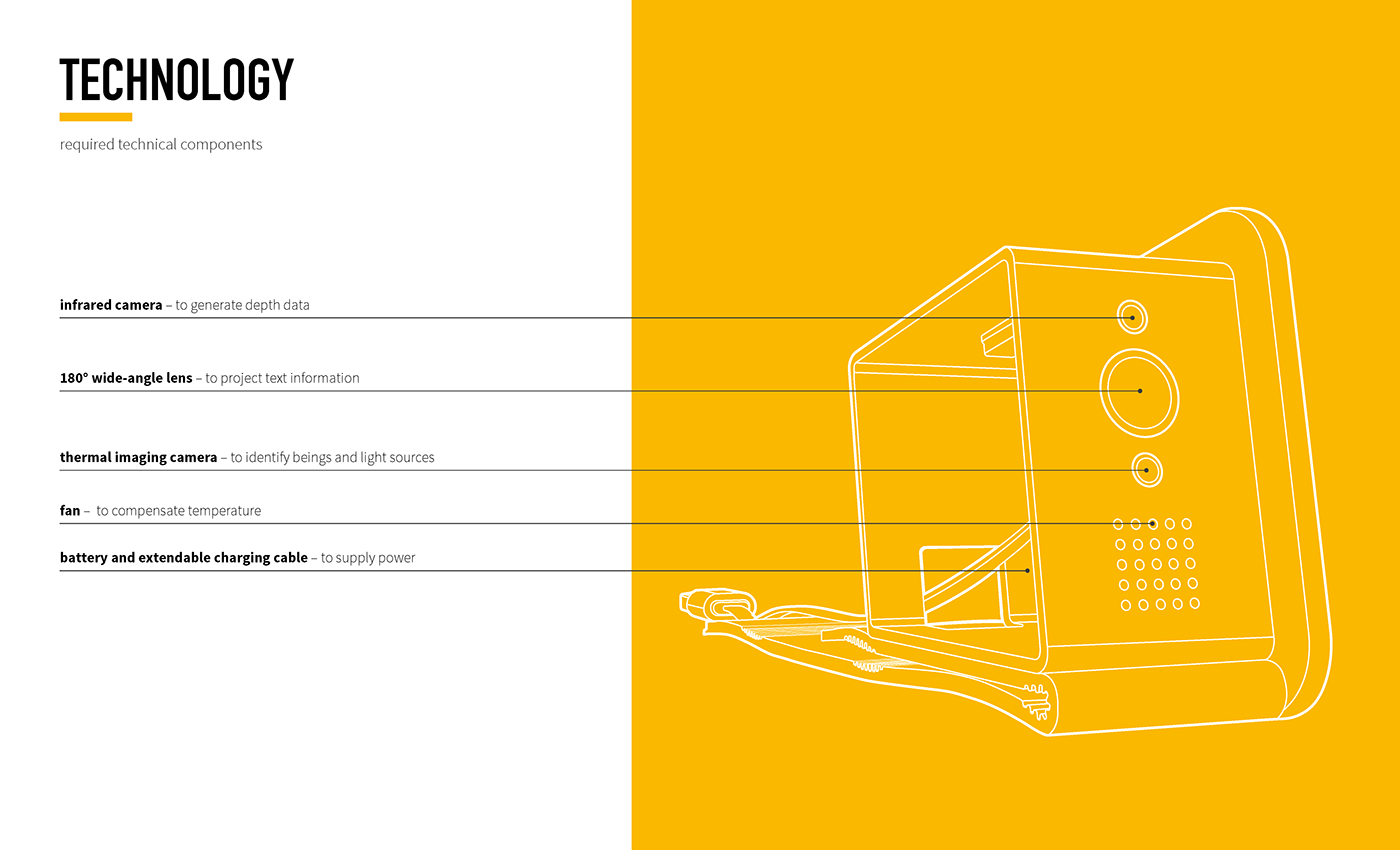
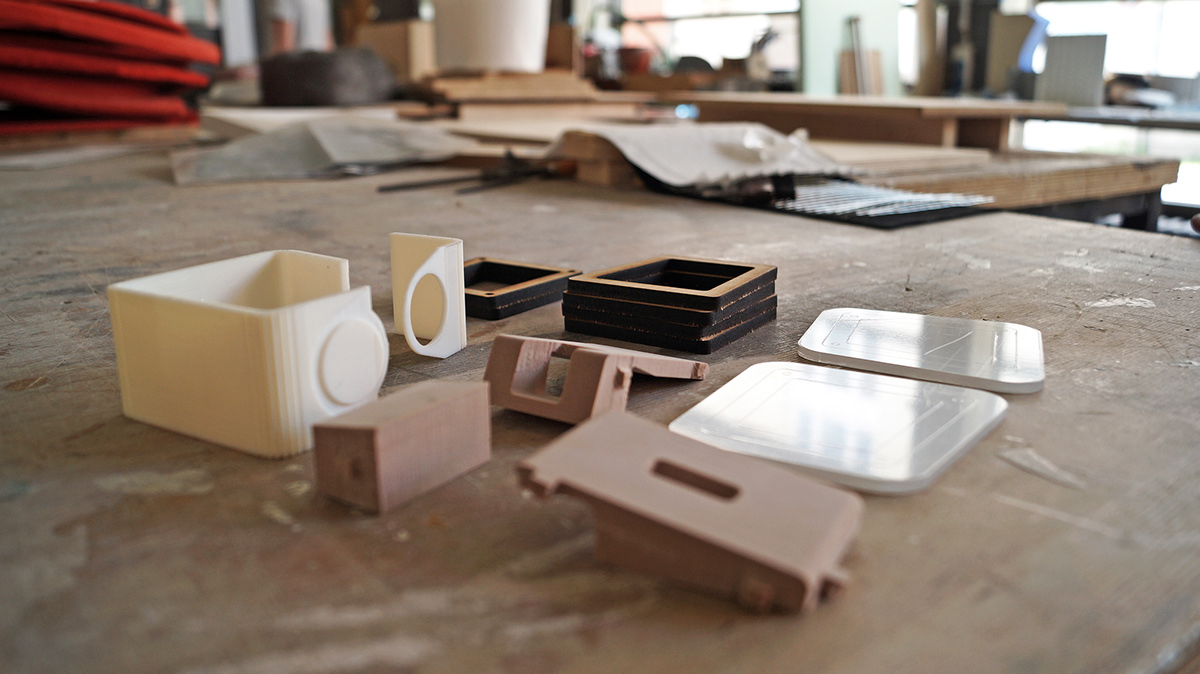
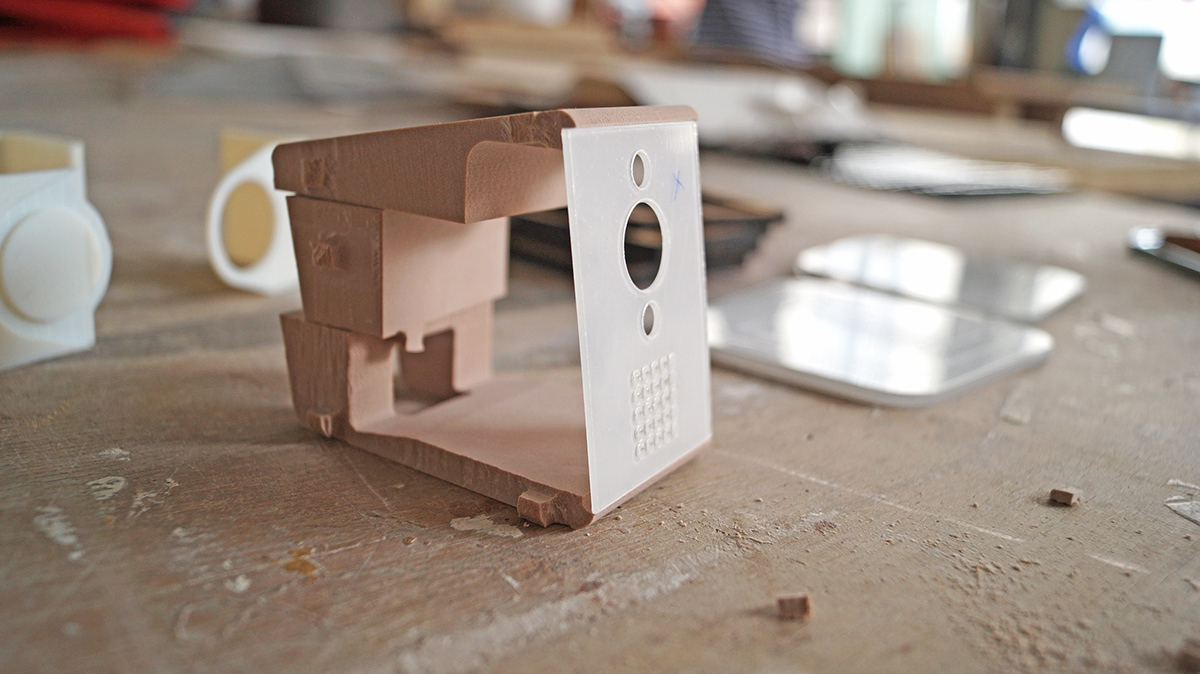
What are the next steps?
Since the phase of conception as well as necessary technologies of shift have been sufficiently defined, I’m ready for the next challenge which means I would like to continue with the construction of functional prototypes. Additionally, I can imagine adding a new technology that allows the use of shift by auditive control. This would have the advantage of completely foregoing the need to watch digital screens during vision training.
